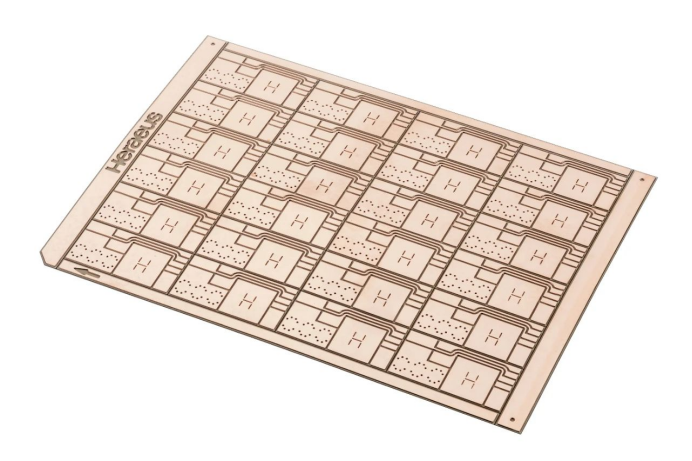

Today, let's understand what the etching factor is in ceramic substrates.
In ceramic PCB, there is a type of PCB called DBC ceramic PCB, which refers to Direct Bonded Copper ceramic substrates. This is a new type of composite material where a ceramic substrate made of highly insulating aluminum oxide or aluminum nitride is directly bonded with copper metal. Through high-temperature heating at 1065~1085°C, the copper metal oxidizes and diffuses at high temperatures with the ceramic to form an eutectic melt, bonding the copper to the ceramic substrate and forming a ceramic composite metal substrate.
The process flow for DBC ceramic PCB is as follows:
- Raw material cleaning
- Oxidation
- Sintering
- Pre-treatment
- Film application
- Exposure (phototool)
- Development
- Etching (corrosion)
- Post-treatment
- Cutting
- Inspection
- Packaging
So, what is the etching factor?
Etching is a typical subtractive process that completely removes all copper layers on the ceramic substrate except for the anti-etch layer, thereby forming a functional circuit.
The mainstream method still uses chemical etching. However, during the etching process with chemical etching solutions, not only is the copper foil etched downward vertically, but it is also etched horizontally. Currently, lateral etching in the horizontal direction is inevitable. There are two opposite definitions for the etching factor F, some people take the ratio of etching depth T to the side width A, and some take the other way around. This article stipulates: the ratio of etching depth T to side width A is called the etching factor F, that is, F=T/A.
Generally, DBC ceramic substrate manufacturers require an etching factor F>2.
In the next article, we will focus on the impact of changes in the etching factor during the manufacturing of ceramic PCB.